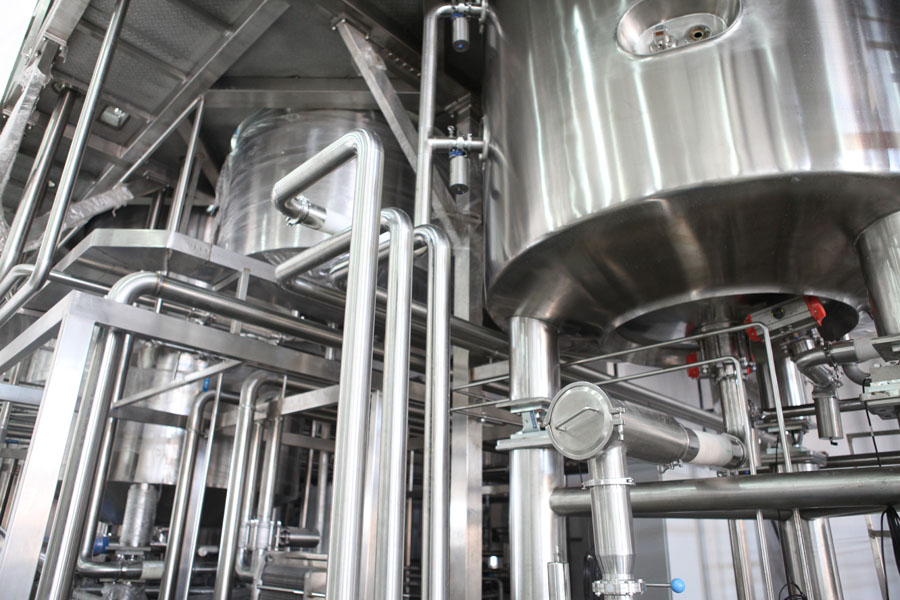Key Factors When Buying a Falling Film Chiller
Purchasing a falling film chiller involves evaluating your process needs against system features and costs. These chillers shine in high-capacity, stable load uses, offering efficient cooling with low refrigerant needs and strong thermal control, but consider budget, warranties, and vendor support.
- Capacity and Sizing: Calculate cooling load in kW or RT and buy a unit 10–20% oversized for future needs and reliability.
- Temperature Requirements: Best for 5°C to 12°C chilled water; factor in costs for sub-zero setups if needed.
- Energy Efficiency: Prioritize high COP (=5 for water-cooled) and IPLV to lower long-term operating expenses.
- Cooling Type: Air-cooled for low water areas (higher upfront cost) or water-cooled for better efficiency (ongoing water costs).
- Build Quality: Opt for stainless steel and reliable distributors to ensure durability and reduce repair costs.
- Maintenance and Support: Choose vendors with easy access designs, automation, and strong warranties for minimal downtime.

Understanding Falling Film Chillers
Efficient Cooling for Industrial Processes
Falling film chillers use gravity for thin refrigerant films on tubes, boosting heat transfer and cutting charge. Ideal for sensitive apps like dairy and chemicals, but weigh initial costs against savings.
- High Efficiency and Low Refrigerant Use
- Suited for Steady Loads
- Compact Vertical Design
- Energy Cost Savings
- Easy Maintenance
- Low-GWP Refrigerant Compatibility
Essential Factors When Buying
Buying decisions impact efficiency and costs. Focus on capacity, temps (5–12°C optimal), compressor, COP, and refrigerants. Best for >100 RT steady loads; consider vendor reputation and total ownership cost.
Seek advanced designs, corrosion-resistant materials, and controls. Compact and modular units fit tight spaces but evaluate installation expenses.
Energy Efficiency and Performance
Aim for COP >5 in water-cooled; thin-film reduces charge 20% vs. flooded. VSDs boost part-load; calculate energy savings vs. purchase price.
Material and Refrigerant Choices
Stainless steel for longevity in harsh environments. Eco refrigerants like R-1234ze or R-717 ensure compliance; factor in availability and costs.
Design and Space Factors
Need vertical space but small footprint. Precise distributors for stability; balance height with site constraints and shipping costs.
Maintenance and Automation
Easy access and automation cut downtime. Check vendor support, spare parts pricing, and training for long-term value.
Lifecycle Costs and ROI
Higher upfront but 20–30% energy savings. Expect quick payback; compare quotes and warranties for best ROI.
When to Buy Falling Film Chillers
Buy over flooded for efficiency and low charge. Superior for large, continuous, sensitive apps; evaluate total costs vs. alternatives.
Common FAQs
A falling film chiller uses a vertical heat exchanger where refrigerant flows as a thin film down the inside of tubes under gravity. This enhances heat transfer efficiency, allowing for faster, more even cooling with reduced refrigerant charge. The chilled fluid, typically water or glycol, absorbs heat from the process side, making it ideal for applications needing precise temperature control and high throughput.
Consider load capacity in RT/kW, temperature range, efficiency (COP/IPLV), type (air/water-cooled), materials, refrigerants, maintenance, lifecycle costs, vendor support, and warranties.
- High heat transfer efficiency and reduced energy use
- Lower refrigerant charge (up to 30% less than flooded systems)
- Gentle cooling for heat-sensitive materials
- Compact design and lower operational noise
- Fast pull-down times and stable temperature control
Falling film chillers are less suited for sub-zero or highly variable loads. Uneven film formation can reduce efficiency, and viscous or scaling fluids may require additional recirculation. They also require sufficient vertical clearance for installation and maintenance.
With proper maintenance and operation, a falling film chiller can last 15–25 years. Routine cleaning, inspection, and monitoring of distribution uniformity are key to ensuring long-term reliability and efficiency.
Maintenance includes periodic cleaning to prevent scaling, checking distributors for even flow, and monitoring refrigerant charge and compressor performance. Automated control systems help maintain film stability and reduce human error.


